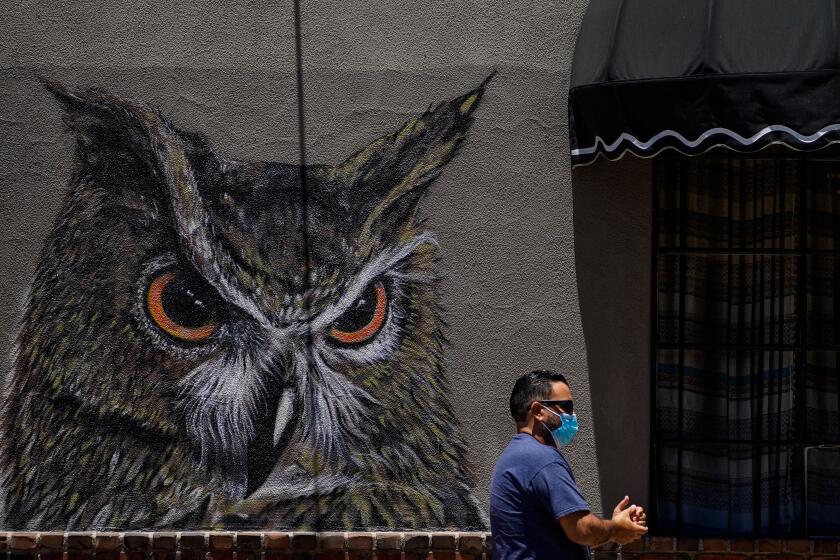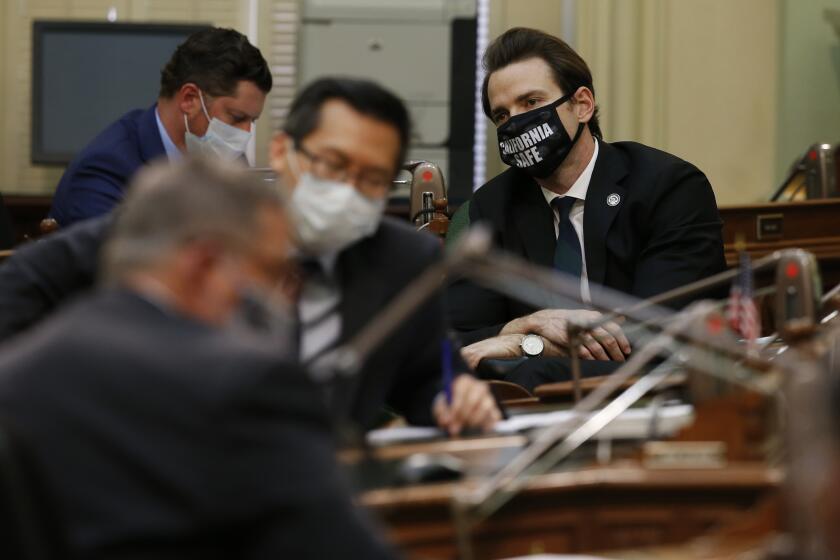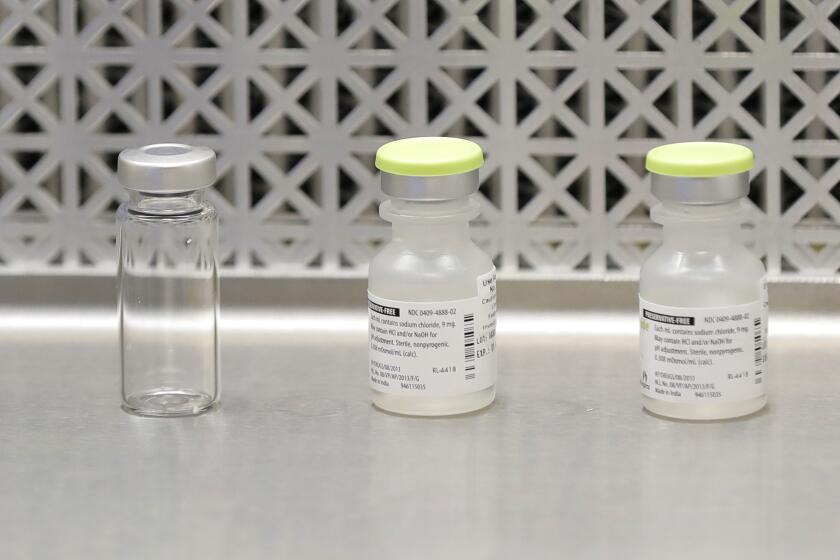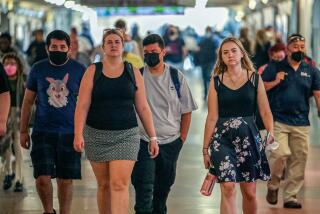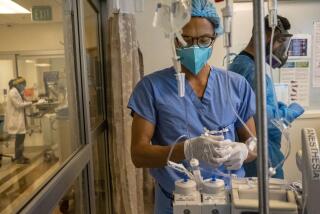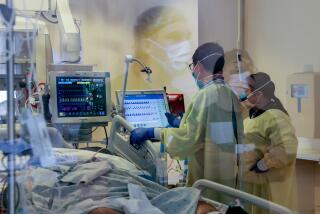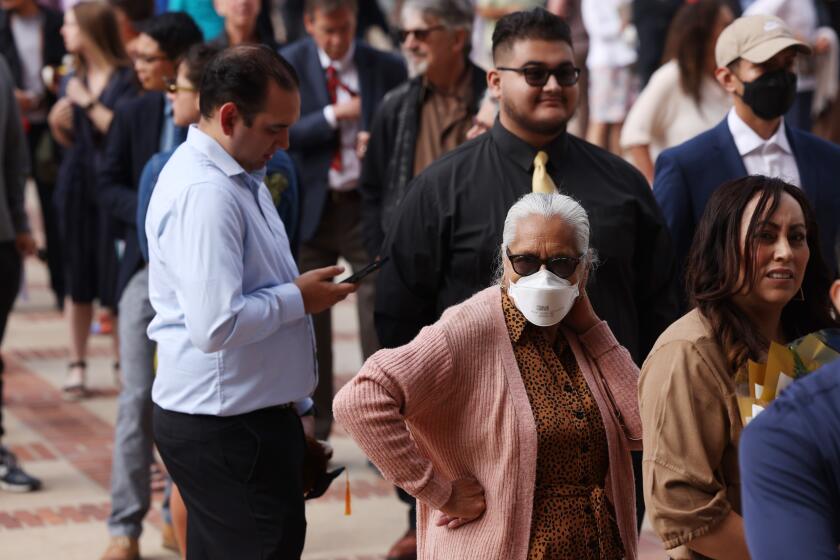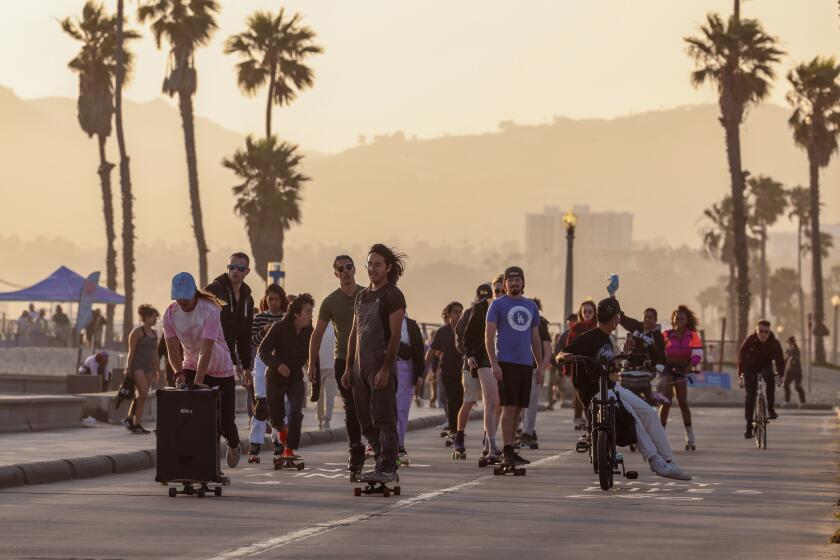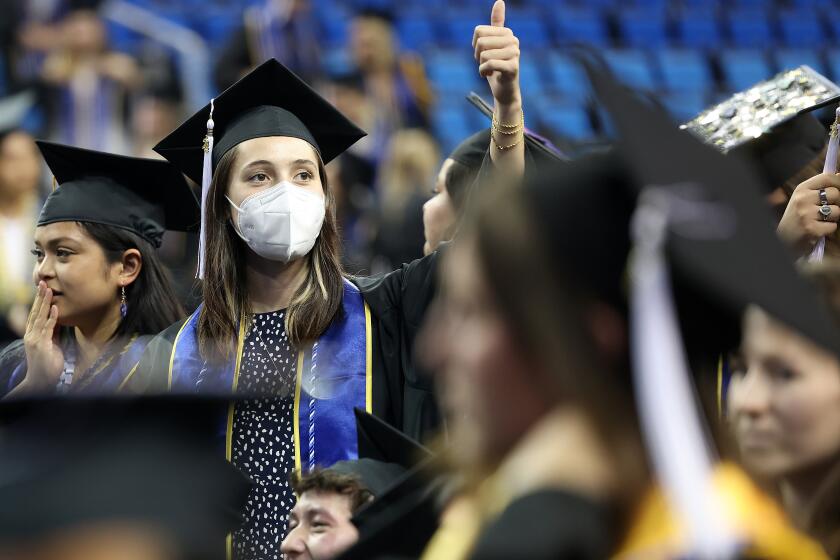California is on the cusp of 5,000 COVID-19 deaths as more businesses reopen
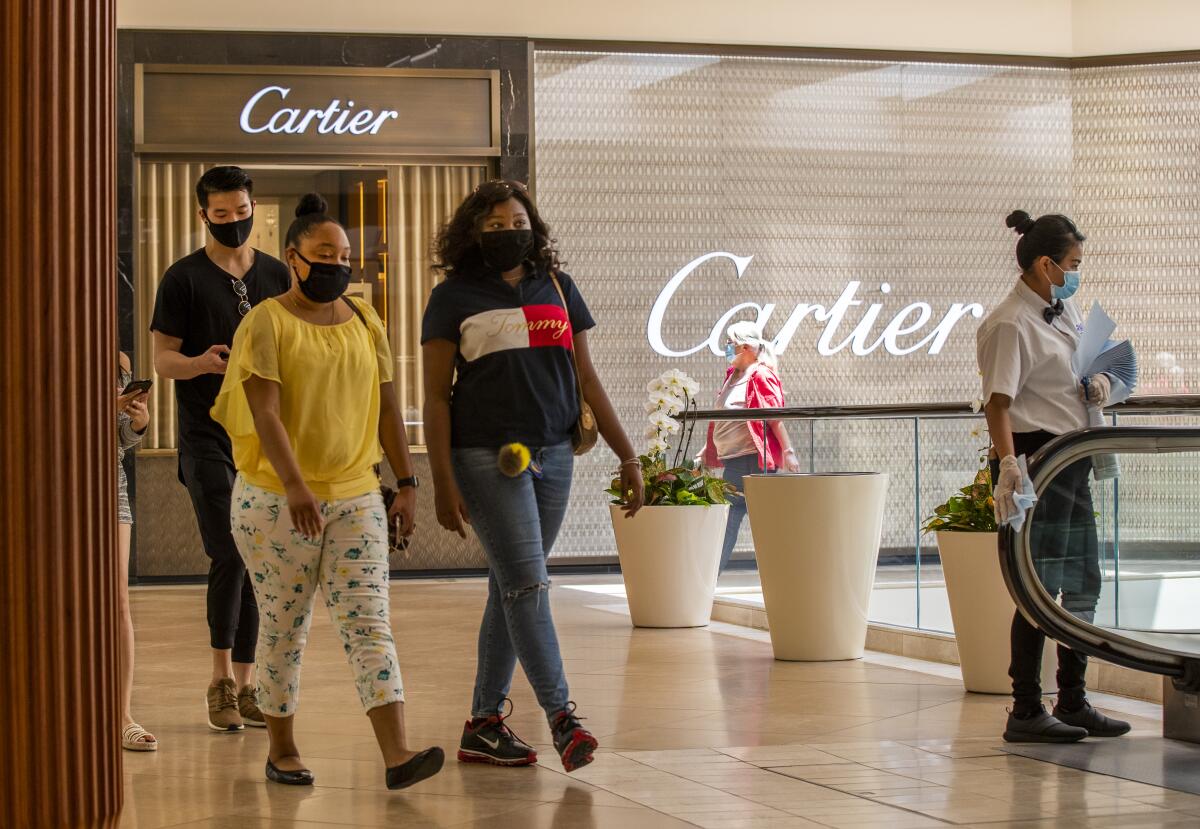
As California reopened another large sector of its businesses Friday, the number of coronavirus cases continued on its upward trajectory and the death toll neared 5,000.
The state recorded its largest one-day increase in new cases Thursday, logging a total of 3,620 new infections and 79 additional deaths.
Los Angeles County accounted for nearly half of the increase. Public health officials reported nearly 1,850 new cases Thursday — the largest one-day increase since the pandemic began — and 50 related deaths. Of the new cases, 600 were from a backlog of test results, officials said.
L.A. County has now recorded more than 68,000 cases of the virus, almost half of the state’s case count of more than 143,000. The cumulative death toll in L.A. County — 2,818 — represents 57% of the state’s fatalities, despite the county being home to one-quarter of California’s population.
In California, mandatory face coverings that experts say reduce the spread of the coronavirus are at the center of an intense political fight.
The continued rise comes as L.A. County took another step toward easing stay-at-home rules put in place to slow the virus’ spread. Friday marked the first day that gyms, fitness facilities, museums, swimming pools and hotels for leisure travel were permitted to reopen, and music, film and television production was allowed to resume.
Officials have always expected an increase in the number of cases as the strictest version of the stay-at-home order was gradually lifted.
California lawmakers are frustrated with Gov. Gavin Newsom’s use of power during the coronavirus outbreak.
The question now is whether COVID-19 will require the hospitalization of a moderate number of people, which the hospital system can handle, or grow into a surge of severely ill patients that will overwhelm intensive care units. It can take two to four weeks before hospitals start seeing a surge in patients after they’ve been infected.
Hospitalizations have continued to decline slightly, but the pace has slowed since last month.
The most recent three-day average of the daily number of hospitalized patients represented a decline of about 1%, according to the latest figures from the Public Health Department’s dashboard of reopening metrics. In late May, the decline was hovering at 15% to 16%.
As of Thursday, 1,416 confirmed coronavirus patients were hospitalized, with 29% of them in intensive care.
Another unknown is whether the increase in is because more people are contracting the virus, or it is a result of increased testing that’s enabling health professionals to identify cases that would have otherwise gone undetected.
The global race for a coronavirus vaccine involves a few basic approaches. Some have been around for decades, others are being tried for the first time.
For that reason, officials are keeping an eye on the positivity rate, which represents the proportion of people who have tested positive out of all those who have been tested. So far, that number continues to decline.
As of Thursday, 746,000 people in L.A. County had been tested and received their results, with about 8% testing positive. In late May, the county reported a positivity rate of 8.5%, and in late April, it was 14%.
Still, there’s also evidence that the spread of the virus is rising.
Before the county began easing stay-at-home requirements last month, the effective transmission rate of the coronavirus was in a good spot: Every infected person on average was infecting fewer than one other person, said Dr. Christina Ghaly, L.A. County’s director of health services.
But last Friday, Ghaly announced that the transmission rate had risen above 1.
The increase showed up a little more than two weeks after L.A. County allowed many retail stores to open for pickup service.
“The model predicts more firmly that the spread of COVID-19 in the Los Angeles County area is likely to increase gradually over time,” Ghaly said.
More to Read
Start your day right
Sign up for Essential California for news, features and recommendations from the L.A. Times and beyond in your inbox six days a week.
You may occasionally receive promotional content from the Los Angeles Times.
